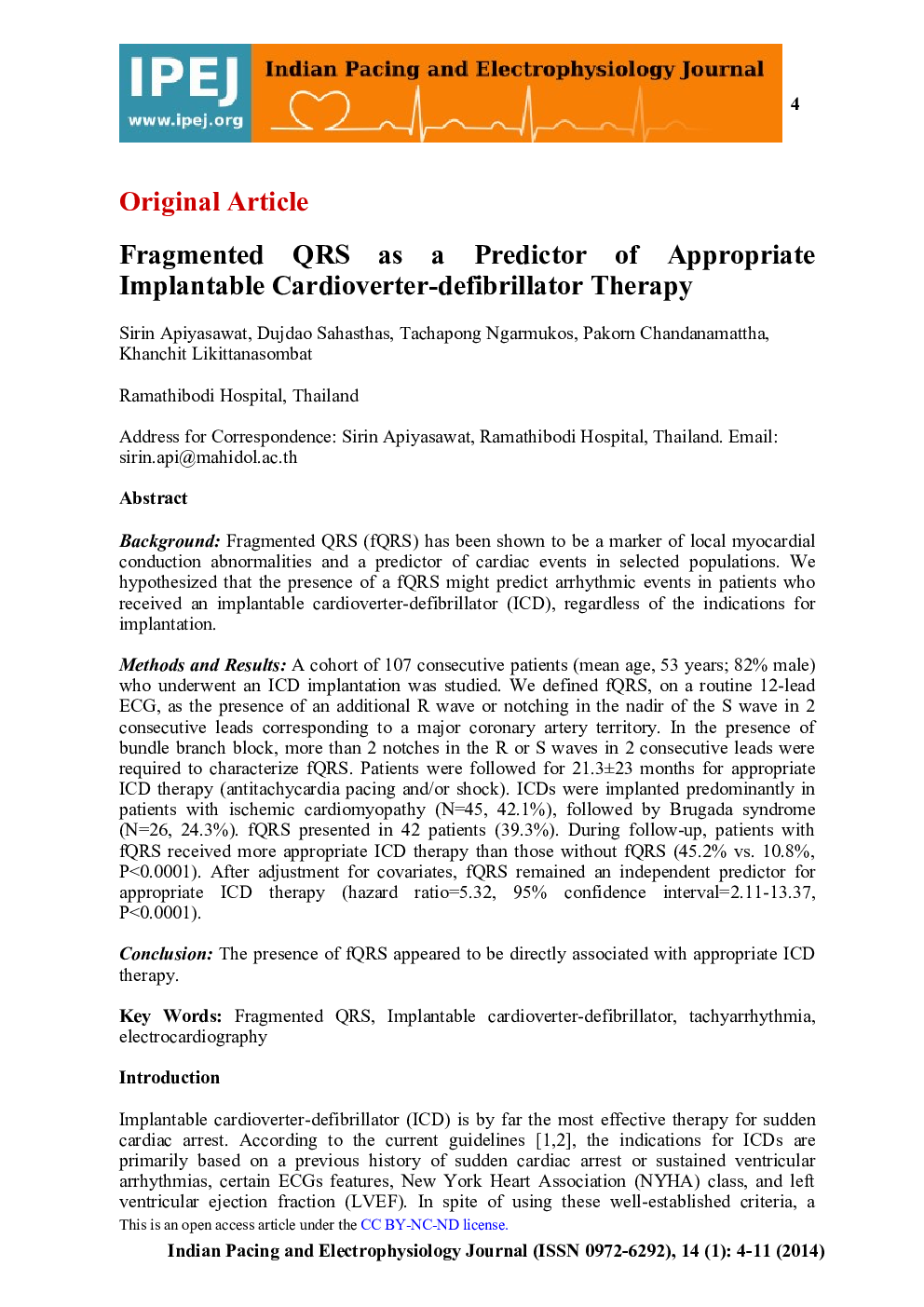| Article ID | Journal | Published Year | Pages | File Type |
|---|---|---|---|---|
| 2928485 | Indian Pacing and Electrophysiology Journal | 2014 | 8 Pages |
BackgroundFragmented QRS (fQRS) has been shown to be a marker of local myocardial conduction abnormalities and a predictor of cardiac events in selected populations. We hypothesized that the presence of a fQRS might predict arrhythmic events in patients who received an implantable cardioverter-defibrillator (ICD), regardless of the indications for implantation.Methods and ResultsA cohort of 107 consecutive patients (mean age, 53 years; 82% male) who underwent an ICD implantation was studied. We defined fQRS, on a routine 12-lead ECG, as the presence of an additional R wave or notching in the nadir of the S wave in 2 consecutive leads corresponding to a major coronary artery territory. In the presence of bundle branch block, more than 2 notches in the R or S waves in 2 consecutive leads were required to characterize fQRS. Patients were followed for 21.3±23 months for appropriate ICD therapy (antitachycardia pacing and/or shock). ICDs were implanted predominantly in patients with ischemic cardiomyopathy (N=45, 42.1%), followed by Brugada syndrome (N=26, 24.3%). fQRS presented in 42 patients (39.3%). During follow-up, patients with fQRS received more appropriate ICD therapy than those without fQRS (45.2% vs. 10.8%, P<0.0001). After adjustment for covariates, fQRS remained an independent predictor for appropriate ICD therapy (hazard ratio=5.32, 95% confidence interval=2.11-13.37, P<0.0001).ConclusionThe presence of fQRS appeared to be directly associated with appropriate ICD therapy.
